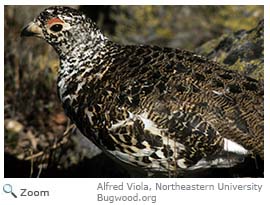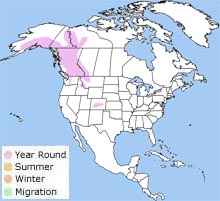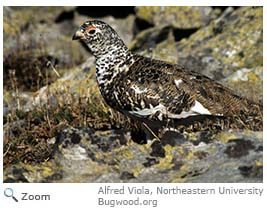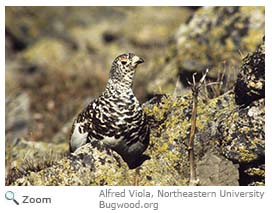White-tailed Ptarmigan - Lagopus leucura |
|||||||||||
Description
Range |
Habitat
DietA large part of the white-tailed ptarmigan's diet is made up of the buds and leaves of willows. It also eats berries, insects, leaves, and flowers. It eats grit to help digest its food. Life Cycle BehaviorThe white-tailed ptarmigan conserves energy in winter by walking instead of flying. It also roosts in snow banks to stay warm. |
||||||||||
Audio Credit: xeno-canto.org Andrew Spencer |
|||||||||||


 The white-tailed ptarmigan is found from southeastern Alaska and Yukon to northern Washington and Montana. It is also found in some parts of the Rocky Mountains in Colorado and New Mexico. It has been introduced to the Sierra Nevada Mountains in California and the Uinta Mountains in Utah.
The white-tailed ptarmigan is found from southeastern Alaska and Yukon to northern Washington and Montana. It is also found in some parts of the Rocky Mountains in Colorado and New Mexico. It has been introduced to the Sierra Nevada Mountains in California and the Uinta Mountains in Utah. 
